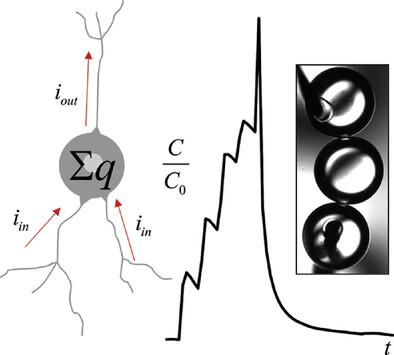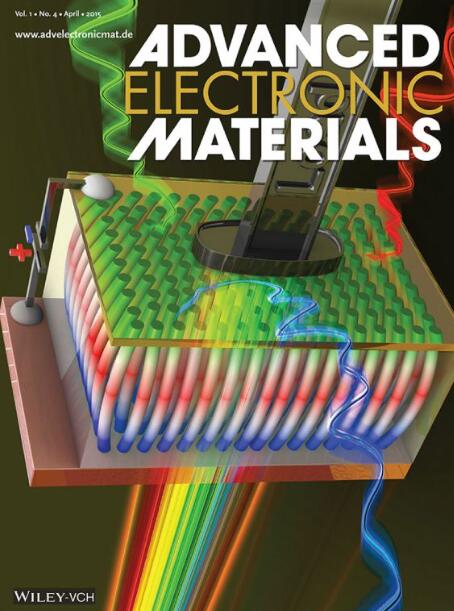Neuron-Inspired Biomolecular Memcapacitors Formed Using Droplet Interface Bilayer Networks
IF 5.3
2区 材料科学
Q2 MATERIALS SCIENCE, MULTIDISCIPLINARY
引用次数: 0
Abstract
Brain-inspired (or neuromorphic) computing circumvents costly bottlenecks in conventional Von Neumann architectures by collocating memory and processing. This is accomplished through dynamic material architectures, strengthening or weakening internal conduction pathways similar to synaptic connections within the brain. A new class of neuromorphic materials approximates synaptic interfaces using lipid membranes assembled via the droplet interface bilayer (DIB) technique. These DIB membranes have been studied as novel memristors or memcapacitors owing to the soft, reconfigurable nature of both the lipid membrane geometry and the embedded ion-conducting channels. In this work, a biomolecular approach to neuromorphic materials is expanded from model synapses to a charge-integrating model neuron. In these serial membrane networks, it is possible to create distributions of voltage-sensitive gates capable of trapping ionic charge. This trapped charge creates transmembrane potential differences that drive changes in the system's net capacitance through electrowetting, providing a synaptic weight that changes in response to the history and timing of input signals. This fundamental change from interfacial memory (dimensions of the membrane) to internal memory (charge trapped within the droplets) provides a functional plasticity capable of multiple weights, longer-term retention roughly an order of magnitude greater than memory stored in the membranes alone, and programming-erasure.

利用液滴界面双层网络形成神经元启发的生物分子膜电容器
大脑启发(或神经形态)计算通过配置内存和处理,绕过了传统冯·诺伊曼架构中昂贵的瓶颈。这是通过动态的材料结构来实现的,加强或削弱内部传导途径,类似于大脑中的突触连接。一类新的神经形态材料通过液滴界面双层(DIB)技术组装脂膜来近似突触界面。由于脂质膜几何形状和嵌入离子传导通道的柔软、可重构性质,这些DIB膜已被研究作为新型忆阻器或忆电容。在这项工作中,神经形态材料的生物分子方法从模型突触扩展到电荷积分模型神经元。在这些串联膜网络中,有可能创建能够捕获离子电荷的电压敏感门的分布。这种被捕获的电荷产生了跨膜电位差,通过电润湿驱动系统净电容的变化,提供了一个突触权重,该权重随输入信号的历史和时间而变化。这种从界面记忆(膜的尺寸)到内部记忆(液滴中捕获的电荷)的基本变化提供了一种功能可塑性,能够承受多重重量,比单独存储在膜中的记忆大约长一个数量级,以及编程擦除。
本文章由计算机程序翻译,如有差异,请以英文原文为准。
求助全文
约1分钟内获得全文
求助全文
来源期刊

Advanced Electronic Materials
NANOSCIENCE & NANOTECHNOLOGYMATERIALS SCIE-MATERIALS SCIENCE, MULTIDISCIPLINARY
CiteScore
11.00
自引率
3.20%
发文量
433
期刊介绍:
Advanced Electronic Materials is an interdisciplinary forum for peer-reviewed, high-quality, high-impact research in the fields of materials science, physics, and engineering of electronic and magnetic materials. It includes research on physics and physical properties of electronic and magnetic materials, spintronics, electronics, device physics and engineering, micro- and nano-electromechanical systems, and organic electronics, in addition to fundamental research.
 求助内容:
求助内容: 应助结果提醒方式:
应助结果提醒方式:


